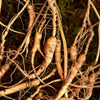Exploring Different Types Of Ginseng: From Korean Red Ginseng To American Ginseng
Ginseng, a herbal marvel with roots deeply embedded in traditional medicine, has transcended centuries as a revered botanical remedy. Its reputation extends across continents, with various types of ginseng emerging from distinct geographical locales. Among these, Korean Red Ginseng and American Ginseng stand out as pillars of health and vitality.
The legacy of ginseng traces back to the Korean peninsula and the lush landscapes of the United States and Canada, where the unique terroir imparts distinctive qualities to these botanical wonders. The allure of ginseng lies not just in its rich history but also in the myriad ways it has been harnessed for well-being.
In this exploration, we will unravel the layers of Korean Red Ginseng and American Ginseng, understanding not only their geographical roots but also the therapeutic attributes that have rendered them indispensable in holistic health practices. From the fertile soils of Korea to the vast expanses of North America, the journey of ginseng unfolds as a tapestry woven with threads of energy, cognition, and immune fortification.
Join us as we embark on a sensory journey through the nuanced flavors, fragrances, and potential health benefits of Korean Red Ginseng and American Ginseng. Whether you are a seasoned herbal enthusiast or a newcomer to the world of botanical remedies, the tale of ginseng promises to captivate and inspire your pursuit of well-being.
Korean Red Ginseng
Nestled in the fertile soils of the Korean peninsula, Korean Red Ginseng, scientifically known as Panax ginseng, stands as a testament to the synergy of climate and geography in creating a botanical powerhouse. The lush green landscapes and specific soil conditions of Korea contribute to the cultivation of this extraordinary herb, celebrated for its therapeutic qualities.
Harvested after six years of meticulous cultivation, Korean Red Ginseng undergoes a unique preparation process that involves steaming and drying, enhancing its potency and efficacy. The result is a vibrant red hue, indicating the transformation and concentration of bioactive compounds within the root.
This crimson gem of traditional medicine is not limited to its raw, whole-root form. It takes on diverse incarnations, from potent extracts to finely ground powders, encapsulated formulations, and soothing teas. Each manifestation retains the essence of Korean Red Ginseng, offering a versatile and convenient means of incorporating its benefits into daily life.
Now, let's delve into the specific benefits that have made Korean Red Ginseng a revered tonic in traditional practices:
1. Boosts Energy and Stamina
Known for its adaptogenic properties, Korean Red Ginseng emerges as a natural ally in combating fatigue and enhancing physical endurance. The carefully cultivated ginsenosides within the herb contribute to increased energy levels, promoting overall vitality.
2. Enhances Cognitive Function
The cognitive benefits of Korean Red Ginseng extend beyond its energizing effects. Regular consumption has been associated with improved mental clarity, heightened focus, and enhanced memory, making it a valuable companion in the pursuit of mental well-being.
3. Supports Immune System
Rich in bioactive compounds, including ginsenosides, Korean Red Ginseng is believed to fortify the immune system. Its consumption is thought to empower the body in its defense against infections, providing a natural shield for overall health.
4. Promotes Sexual Health
Revered for its aphrodisiac properties, Korean Red Ginseng has a long history of use to enhance sexual performance and libido in both men and women. This aspect of its therapeutic profile adds a holistic dimension to its role in promoting well-being.
Whether you choose to savor the earthy notes of a ginseng-infused tea or opt for the convenience of encapsulated extracts, the essence of Korean Red Ginseng beckons—a botanical ally with a rich heritage and a tapestry of potential health benefits.

American Ginseng
In the vast landscapes of the United States and Canada, another variety of ginseng thrives—American Ginseng, scientifically known as Panax Quinquefolius. Distinguished by its milder taste compared to its Korean counterpart, this North American native has carved its niche in herbal traditions, offering a nuanced approach to well-being.
Known for its adaptogenic qualities, American Ginseng has been a stalwart companion in navigating the stresses of daily life. Whether enjoyed as a soothing tea or in supplement form, its subtle yet profound effects have garnered attention in holistic health practices.
Let's unravel the distinctive benefits that make American Ginseng a sought-after herbal remedy:
1. Stress and Anxiety Relief
Rooted in traditional wisdom, American Ginseng has long been utilized as an adaptogen, aiding the body in coping with stress. Its gentle yet effective approach promotes a sense of calmness and relaxation, making it an ally in the quest for mental well-being.
2. Supports Blood Sugar Regulation
Scientific studies suggest that American Ginseng may play a role in regulating blood sugar levels and improving insulin sensitivity. This attribute positions it as a potentially valuable addition to the routines of individuals managing diabetes or pre-diabetic conditions.
3. Boosts Cognitive Function
Much like its Korean counterpart, American Ginseng contributes to cognitive well-being. Regular consumption has been associated with improvements in memory and attention span, offering a holistic approach to supporting mental acuity.
4. Anti-inflammatory Properties
Within the compounds of American Ginseng lies a gift—a set of anti-inflammatory properties. These properties may aid in reducing inflammation within the body, providing relief from symptoms associated with certain chronic conditions.
The journey with American Ginseng unfolds as a gentle exploration, offering a mild yet impactful embrace of well-being. Whether savored in a cup of tea or incorporated into a daily supplement routine, the legacy of American Ginseng speaks to the resilience and adaptability ingrained in the botanical tapestry of North America.
Exploring the Global Tapestry of Ginseng
Beyond the realms of Korean Red Ginseng and American Ginseng, the global landscape of ginseng is woven with diverse varieties, each with its own unique characteristics and regional significance. Let's take a glimpse into this rich tapestry of botanical wonders:
1. Siberian Ginseng (Eleutherococcus Senticosus)
Hailing from the dense forests of Siberia, this ginseng variety, though not botanically related to Korean or American Ginseng, shares adaptogenic properties. Siberian Ginseng has been traditionally used to combat stress, enhance stamina, and support the immune system. Its adaptogenic nature has made it a staple in traditional medicine practices across Asia.
2. Indian Ginseng (Withania Somnifera or Ashwagandha)
Known as Ashwagandha in Ayurvedic medicine, Indian Ginseng is revered for its rejuvenating properties. It is celebrated for promoting vitality, reducing stress, and supporting overall well-being. Ashwagandha has gained global popularity for its adaptogenic qualities and is often used to enhance resilience to daily stressors.
3. Brazilian Ginseng (Pfaffia Paniculata or Suma Root)
Native to the rainforests of Brazil, Suma Root is often referred to as Brazilian Ginseng due to its adaptogenic properties. Traditionally used in South American folk medicine, Suma Root is believed to boost energy, support hormonal balance, and enhance immune function. Its rich history in indigenous healing practices adds a layer of cultural significance to its global presence.
As we traverse continents and delve into the diverse varieties of ginseng, it becomes evident that each holds a unique story and set of potential benefits. The global tapestry of ginseng invites exploration, encouraging individuals to embrace the holistic traditions that have woven these botanical wonders into the fabric of well-being. Whether from the slopes of the Korean peninsula, the expanses of North America, the Siberian forests, or the Brazilian rainforests, ginseng, in its myriad forms, continues to captivate and contribute to the intricate mosaic of herbal remedies worldwide.
Frequently Asked Questions (FAQs)
1. Can Pregnant Women Safely Use Ginseng?
It is advisable for pregnant women to consult with their healthcare providers before incorporating ginseng into their routines. The potential impact of ginseng on pregnancy and breastfeeding may vary, and professional guidance ensures the safety of both the mother and the baby.
2. Are There Medication Interactions with Ginseng?
It is crucial to communicate ginseng use to your healthcare provider, particularly if you are on prescription medications. This proactive approach helps prevent potential interactions, ensuring the overall safety and effectiveness of your health regimen.
3. Is It Okay to Take Ginseng on an Empty Stomach?
While there is no strict prohibition, some individuals may experience mild digestive discomfort when taking ginseng on an empty stomach. To minimize any potential gastrointestinal effects, it is often recommended to consume ginseng with food. However, individual tolerance may vary, and it's advisable to observe how your body responds.
4. How Soon Can I Expect Benefits from Ginseng?
The timeline for experiencing the benefits of ginseng varies from person to person. Some individuals may notice changes in energy levels or mental clarity relatively quickly, while others may require a more extended period of consistent use. Patience and consistency in consumption are key factors in unlocking the full potential of ginseng's benefits.
5. Can Ginseng Replace Medical Treatment?
While ginseng is a valuable supplement with potential health benefits, it should not be considered a substitute for medical treatment. If you have a medical condition or are on medication, it's crucial to consult with a healthcare professional before relying solely on ginseng or any other herbal remedy. Integrating ginseng into your routine should complement proper medical care rather than replace it.
Conclusion

Ginseng, particularly Korean Red Ginseng and American Ginseng, offers a range of health benefits and has been used in traditional medicine for centuries. While Korean Red Ginseng is renowned for its energy-boosting and immune-supporting properties, American Ginseng is known for its stress-relieving and blood sugar-regulating effects.
Both types of ginseng can be incorporated into your daily routine to promote overall well-being. To explore more about the different varieties of ginseng and their applications, please contact us at Contact@KGCUS.com. Start harnessing the potential benefits of ginseng and embark on a journey towards better health.
 Stamina
Stamina Energy
Energy Immunity
Immunity Antioxidant
Antioxidant Beauty
Beauty Fitness
Fitness Blood Circulation
Blood Circulation Liver & Heart
Liver & Heart Bones & Joints
Bones & Joints Eye & Brain
Eye & Brain Digestion
Digestion Relax & Sleep
Relax & Sleep For All
For All Men's Health
Men's Health Woman's Health
Woman's Health Kid's Health
Kid's Health Jar
Jar Stick
Stick Pouch
Pouch Root & Slices
Root & Slices Shot
Shot Pill
Pill Tea & Powder
Tea & Powder Candy
Candy

 Our Brand
Our Brand Korean Red Ginseng
Korean Red Ginseng Premium Ingredient G1899
Premium Ingredient G1899





